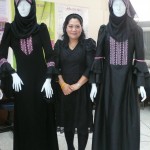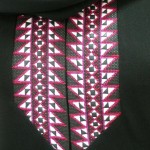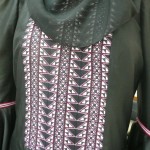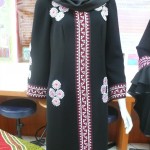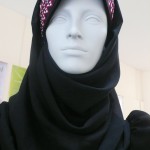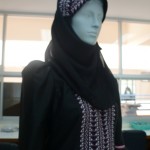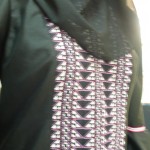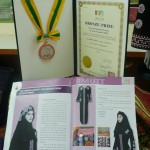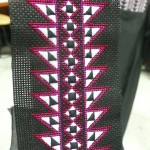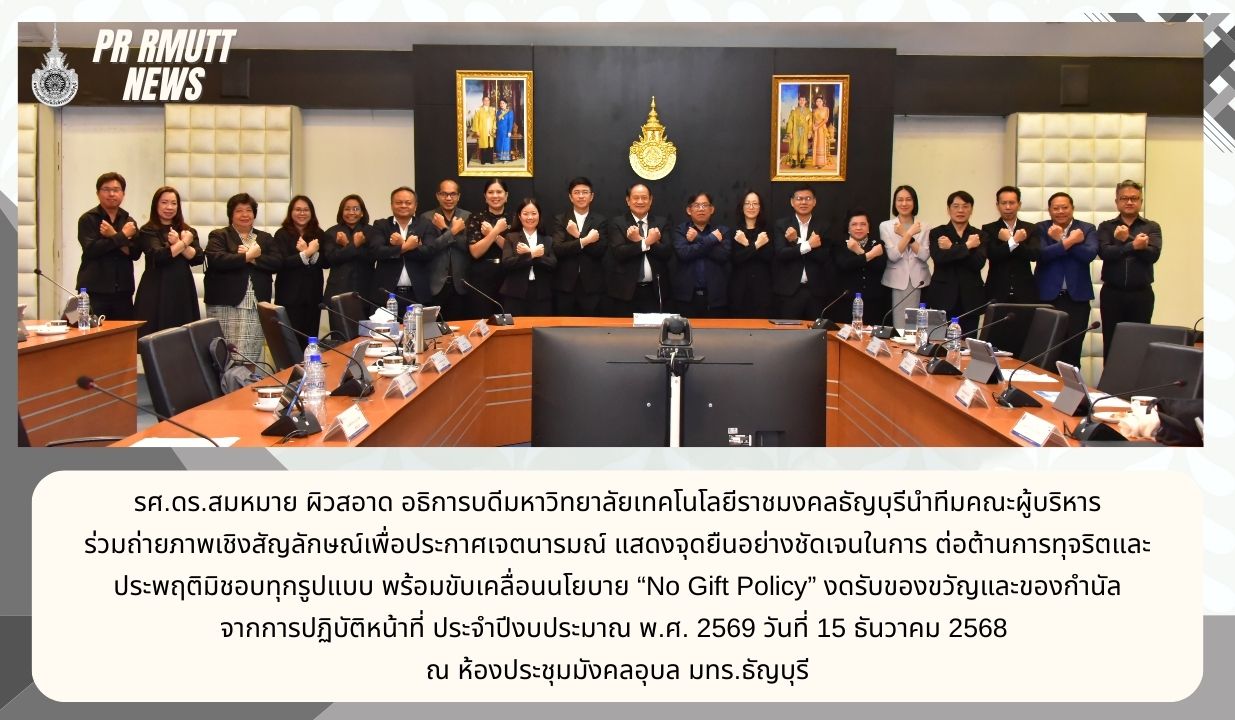มทร.ธัญบุรี ไอเดียสุดเก๋ ดึงผ้าจากชาวเขา มาผสานการออกแบบชุดสาวมุสลิมสุดอย่างงดงาม
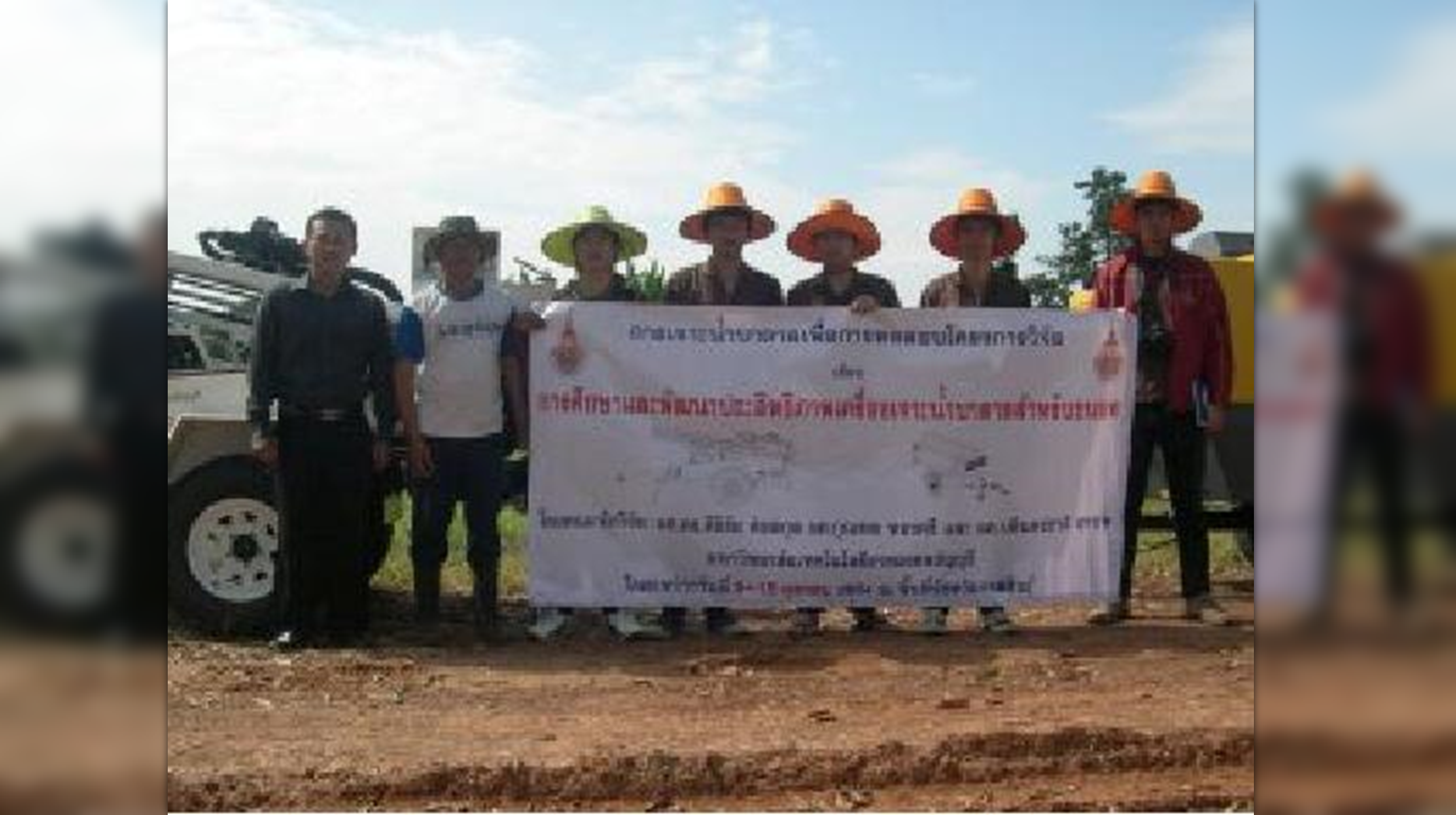
มทร.ร่วมกับบริษัทเอกชน พัฒนาเครื่องขุดเจาะน้ำบาดาลเพื่อพื้นที่แห้งแล้งภาคอีสาน
17 สิงหาคม 2012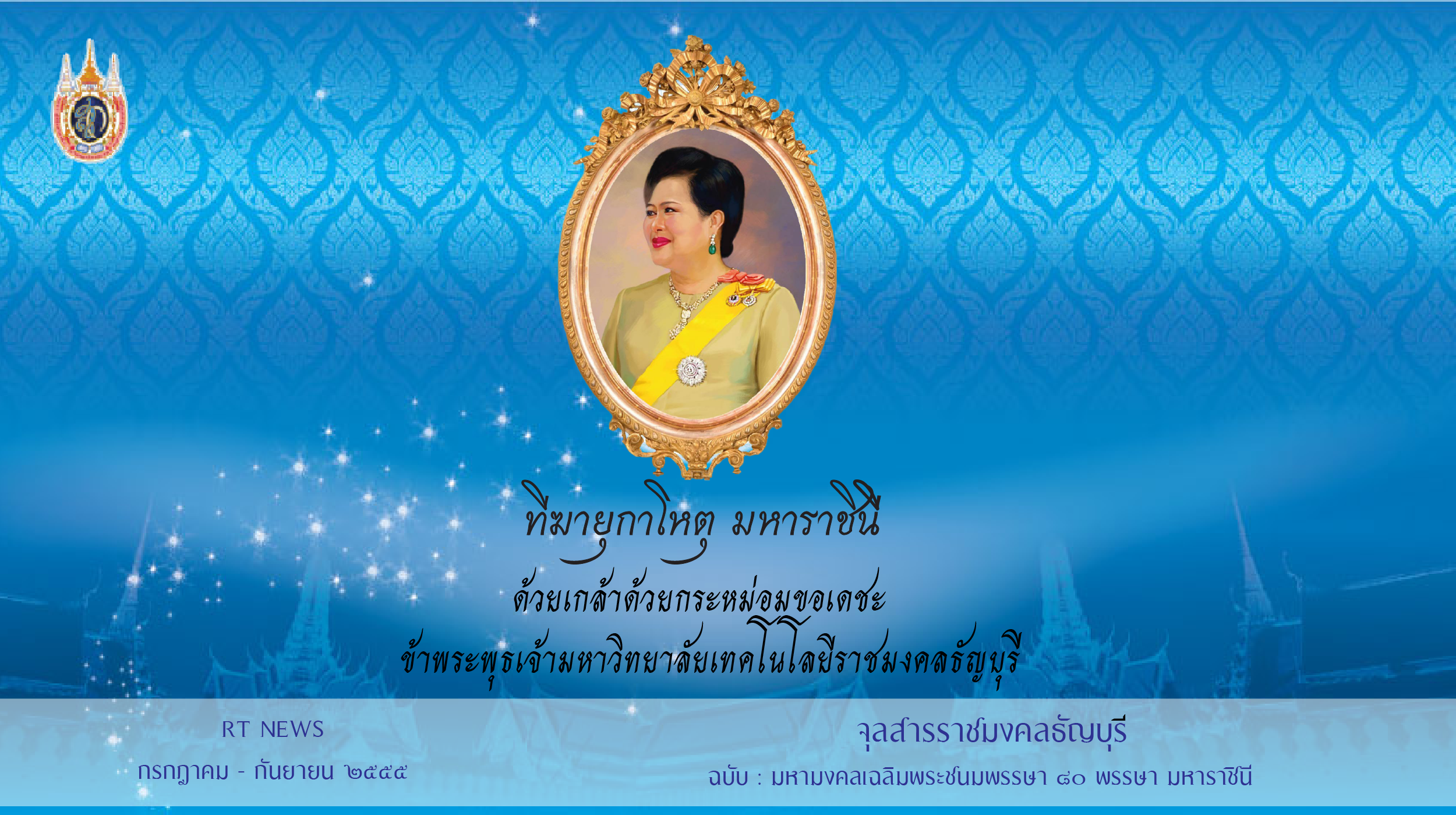
จุลสารราชมงคลธัญบุรี ฉบับ: มหามงคลเฉลิมพระชนมพรรษา ๘๐ พรรษา มหาราชินี
17 สิงหาคม 2012คงไม่มีใครจะคิดว่า ลากปักอันละเอียด จากฝีมือของชาวเขาบนดอยสูง จะไปประดับตกแต่งชุดเสือผ้าสตรีของชาวมุสลิมได้ ได้ลงตัวและกลมกลืน ซึ่ง แต่ ความไม่คาดคิดดังกล่าวก็เกิดขึ้นได้ เมื่อมีผู้เล็งเห็นความงาม ละเอียด ประณีตของลายปัก และความเฉพาะตัวของเสื้อผ้าสตรีชาวมุสลิม ซึ่งภาพที่คุ้นตาคือเสือผ้าที่ปกปิดมิดชิด สีดำทั้งตัว
โดย นางสาววราภรณ์ วงค์ปถัมภ์ อาจารย์จากคณะเทคโนโลยีคหกรรมศาสตร์ มหาวิทยาลัยเทคโนโลยีราชมงคลธัญบุรี ผู้เป็นเจ้าของแนวความคิด และจากผลงานนี้ยังได้นำไปแสดงสู่สายตาของนานาชาติและยังสามารถคว้ารางวัล เหรียญทองแดง เงิน (KIWIE 2012 Silver Medal) จาก KIWIE 2012 ในงาน Korea International Women’s Invention Exposition 2012 ประเทศเกาหลีใต้
โดยแนวความคิดการออกแบบชุดสตรีชาวมุสลิมที่ได้นำเอาผ้าจากชาวเขามาใช้ร่วมในการออกแบบนั้น เจ้าของผลงานเปิดเผยว่า ผ้าจากชาวเขาที่เลือกมาออกแบบ ในครั้งนี้เป็นผ้าจาก เผ่าม้ง ซึ่งเป็นผ้าปัก ที่มีความเฉพาะตัว ชาวเผ่าม้งปักกันเองด้วยมือ ลวดลายที่ได้ก็ละเอียดประณีต ดังนั้นเมื่อมีแนวคิดที่จะออกแบบชุดสตรีชาวมุสลิม ซึ่งปกติเราจะคุ้นตาว่าเป็นชุดปกปิดมิดชิด สีดำตลอดตัว ซึ่งจริงๆแล้ว ก็ไม่ได้หมายความว่า ชุดชาวมุสลิมจะไม่สามารถออกแบบให้สวยงามและแต่งเติมสีสันลงไปไม่ได้ ตราบใดที่ยังอยู่ในขอบเขตการออกแบบและแต่งกายที่ถูกต้องตามแบบชาวมุสลิม
และนี่เองจึงเป็นที่มาของการนำเอาผ้าจากเผ่าม้ง มาใช้ออกแบบและตกแต่งชุดสตรีชาวมุสลิม และเมื่อนำมาตัดเย็บก็พบว่า มีความสวยงามและลงตัว อีกทั้งเมื่อนำออกไปแสดงที่ต่างประเทศ ยังได้รับความสนใจ จากสตรีชาวมุสลิมเป็นจำนวนมาก
ด้วยลายปักที่ละเอียดประณีตของชาวเขา ประกอบกับการดีไซด์ แบบชุด ทำให้ชุดที่ได้เป็นที่ถูกตาต้องใจของสตรีชาวมุสลิม ที่ต้องการชุดที่สวยงามแต่ก็ยังคงความเป็นเอกลักษณ์ของสาวมุสลิมอย่างครบถ้วน นางสาววราภรณ์ยังได้เล่าว่า ลายปักชาวเขาที่นำมาร่วมในการออกแบบจะถูกนำมาตกแต่ง ตามบริเวณต่างๆของชุทั้งปลายแขน ชายเสื้อ กระโปรง และส่วนต่างๆของชุดได้อย่างลงตัว อีกประการหนึ่งที่ผ้าจากเผ่าม้งสามารถนำมาผสานกับการออกแบบชุดสตรีมุสลิมคือ ด้วยลายและสีของผ้าที่ส่วนมากเป็นสี ดำ แดง ชมพู ซึ่งเป็นสีและลายเฉพาะและกลสมกลืนกับชุดสตรีชาวมุสลิมอย่างสวยงามและลงตัว
ไม่ว่าอย่างไรก็ตามสตรีก็ยังอยู่คู่กับความสวยงามอยู่เสมอ หรือไม่ว่าสตรีชาวมุสลิมที่ต้องแต่งตัวมิดชิดตามแบบแผนของชาวมุสลิม แต่นั่นก็ไม่ได้หมายความว่าพวกเธอจะไม่สามารถมีชุดในแบบมุสลิมที่สวยงาม
เรียบเรียงข้อมูลโดย : มณีรัตน์ ปัญญพงษ์ กองประชาสัมพันธ์ราชมงคลธัญบุรี
The Meeting of Two Cultures:
Hmong Embroidered Patterns Find a Place in Muslim Women’s Clothing
The elaborate patterns usually found in the ethnic hill-tribes’ embroidered garment has now become part of the design in Muslim women’s clothing, thanks to Waraporn Wongpatham, lecturer at RMUTT’s Faculty of Home Economics Technology, who fell in love with the beautiful designs of traditional dresses and headdresses that Muslim women wear.
“My inspiration came from the colorful hand-embroidered patterns on Hmong costume,” Waraporn said. “These patterns are very unique and the designs have so many intricate details. Usually, we are familiar with the sight of Muslim women dressed in all-black attire, but this doesn’t mean that we can’t add colors to the fabric, as long as the overall design conforms to the Islamic tradition,” she added.
With this initial idea came experiments with pattern designs, which lead to the production of the final costume. The fascinating combination derived from two different cultures caught much attention during an international roadshow as well as from a number of Muslim women. Earlier this year, Waraporn received an international recognition for her creativity and was awarded the KIWIE 2012 Silver Medal at Korea International Women’s Invention Exposition in South Korea earlier this year.
Waraporn expertly combined the elaborate patterns of the Hmongs’ hand-embroidered garment with her own pattern designs, strictly following the cultural norms and Islamic tradition. The ethnic patterns are incorporated into the frills, hem, dresses and various parts of the costume. “What makes it work is the fact that traditional Hmong costumes are also largely black, with parts of red and bright pink adding splashes of color to the overall design. When this is applied to the Muslim clothing, it looks fascinating,” she said.
Waraporn’s work reinforces the idea that women and beauty do complete each other. More importantly, her work demonstrates that there’s always room for fashion design in a culture that is strictly bound to tradition like Islam.



